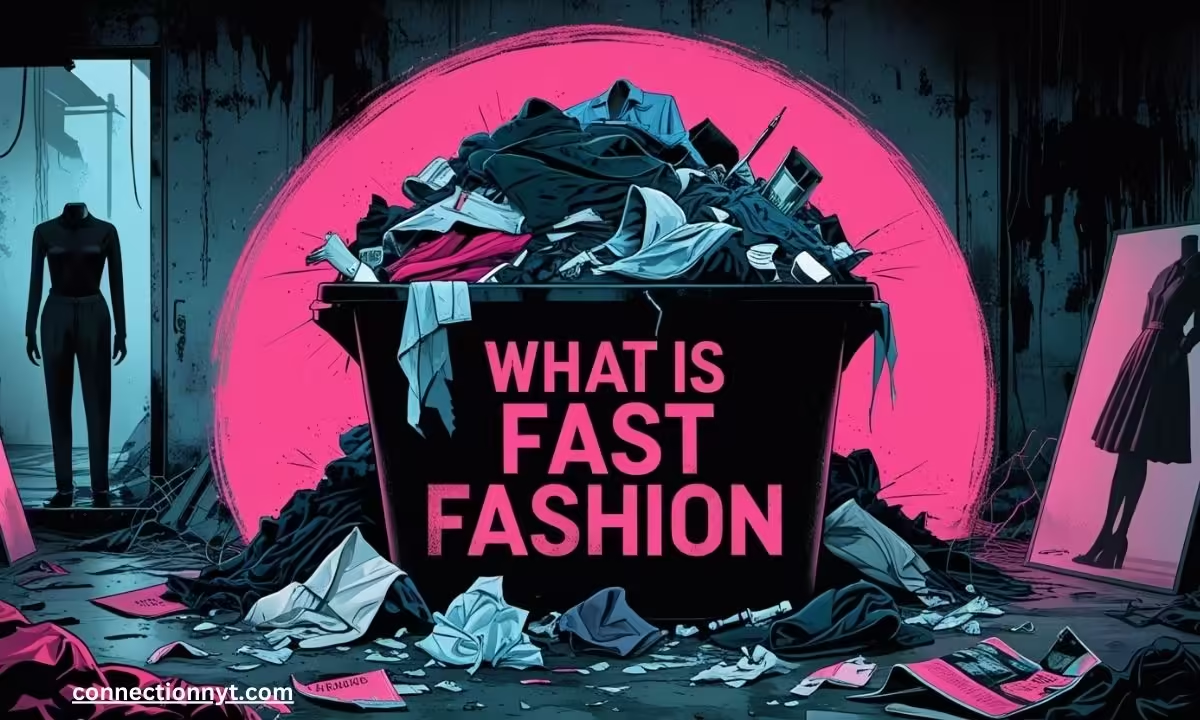In recent years, the term “fast fashion“ has gained significant attention in the fashion industry and among consumers. Fast fashion refers to a business model that focuses on rapidly producing trendy clothing at an affordable price. While it allows consumers to stay up-to-date with the latest styles, it has also sparked debates due to its impact on the environment, society, and economy.
In this comprehensive guide, we’ll explore what fast fashion is, its history, benefits, controversies, and how it affects the world.
History of Fast Fashion
Fast fashion is not a new concept, but its rapid evolution began in the late 20th century. Let’s take a quick look at how it developed:
- 1960s and 1970s – The fashion industry began adapting trends more quickly due to technological advancements in textile production.
- 1980s – Retailers like Zara pioneered the fast fashion model, focusing on speed and affordability.
- 1990s and Early 2000s – Fast fashion became mainstream, with brands such as H&M, Forever 21, and Primark dominating the market.
Today, fast fashion is a multi-billion-dollar industry, but it’s also facing criticism for its environmental and social costs.
Characteristics of Fast Fashion
Several features distinguish fast fashion from traditional fashion models:
1. Quick Turnaround Time
Fast fashion brands design, manufacture, and deliver clothing to stores within weeks. This rapid process allows them to keep up with the latest trends and meet consumer demand almost instantly.
2. Affordable Pricing
One of the main attractions of fast fashion is its affordability. By using cheaper materials and mass production techniques, brands can offer stylish clothing at low prices.
3. Trend-Driven Collections
Fast fashion thrives on replicating high-fashion designs and trends from the runway, celebrity culture, and social media. New collections are launched frequently to entice consumers to buy more.
4. Low-Quality Materials
To keep costs down, fast fashion brands often use synthetic fabrics such as polyester, which are inexpensive but less durable than natural fibers.
Benefits of Fast Fashion
Despite its controversies, fast fashion offers some undeniable advantages:
1. Accessibility and Affordability
Fast fashion makes trendy clothing accessible to a broader audience. Not everyone can afford high-end designer pieces, but fast fashion offers similar styles at a fraction of the price.
2. Constant Variety
Consumers enjoy a constantly changing inventory with new styles arriving every few weeks. This variety allows them to experiment with different looks and trends.
3. Economic Growth
Fast fashion contributes significantly to the global economy. It creates jobs in manufacturing, retail, and logistics, especially in developing countries.
The Dark Side of Fast Fashion
While fast fashion has its benefits, it also has a darker side. Critics argue that it comes at a high cost to the environment and workers.
1. Environmental Impact
Fast fashion is a major contributor to environmental pollution. Here’s how:
- High Water Usage: Producing cotton for fast fashion consumes vast amounts of water. For example, a single pair of jeans can require over 1,800 gallons of water.
- Carbon Emissions: The fashion industry is responsible for 10% of global carbon emissions, largely due to the fast fashion model.
- Textile Waste: Cheap, disposable clothing often ends up in landfills. The average person discards 81 pounds of clothing per year.
2. Poor Working Conditions
Fast fashion brands often outsource production to factories in developing countries where labor is cheap. Unfortunately, this sometimes leads to:
- Low Wages
- Unsafe Working Conditions
- Child Labor
3. Quality Over Quantity
Fast fashion encourages a “throwaway” culture. Clothing is often poorly made and designed to last only a few wears, leading to excessive consumption and waste.
How to Identify Fast Fashion Brands
If you want to recognize fast fashion brands, look for these signs:
- High Volume of New Arrivals: New collections almost every week.
- Low Prices for Trendy Styles: Clothes that mimic runway fashion but are sold at a fraction of the price.
- Short Product Lifespan: Garments that lose their shape or color after a few washes.
The Future of Fast Fashion
The fast fashion industry is under increasing pressure to change. Growing consumer awareness and advocacy for sustainability are driving brands to rethink their practices.
1. Sustainable Alternatives
Many consumers are turning to slow fashion, which emphasizes quality, sustainability, and ethical production. Slow fashion encourages buying fewer, higher-quality items that last longer.
2. Eco-Friendly Innovations
Some fast fashion brands are adopting eco-friendly practices, such as using recycled materials, reducing water usage, and committing to fair labor practices.
3. Resale and Upcycling
The rise of second-hand fashion and clothing rental services is helping reduce the demand for fast fashion. Platforms like ThredUp and Poshmark promote the circular economy by giving clothes a second life.
How to Be a Conscious Consumer
If you want to minimize your impact and shop more responsibly, here are a few tips:
1. Invest in Quality
Focus on buying high-quality pieces that will last longer rather than trendy items that will quickly go out of style.
2. Support Ethical Brands
Look for brands that prioritize sustainability and fair labor practices. Certifications such as Fair Trade, GOTS (Global Organic Textile Standard), and OEKO-TEX can help you identify ethical options.
3. Buy Second-Hand
Thrift stores, consignment shops, and online marketplaces offer affordable alternatives to fast fashion. Buying second-hand reduces waste and supports a more circular fashion economy.
4. Practice Minimalism
Adopting a minimalist approach to fashion can help you avoid unnecessary purchases. Focus on building a timeless, versatile wardrobe.
Conclusion
Fast fashion has transformed the way we consume clothing, offering affordability and convenience. However, it also poses significant challenges to the environment, society, and ethical practices. By understanding what fast fashion is and its impact, you can make more informed choices as a consumer.
The future of fashion lies in sustainability, innovation, and conscious consumerism. Together, we can move towards a more ethical and environmentally friendly fashion industry.
